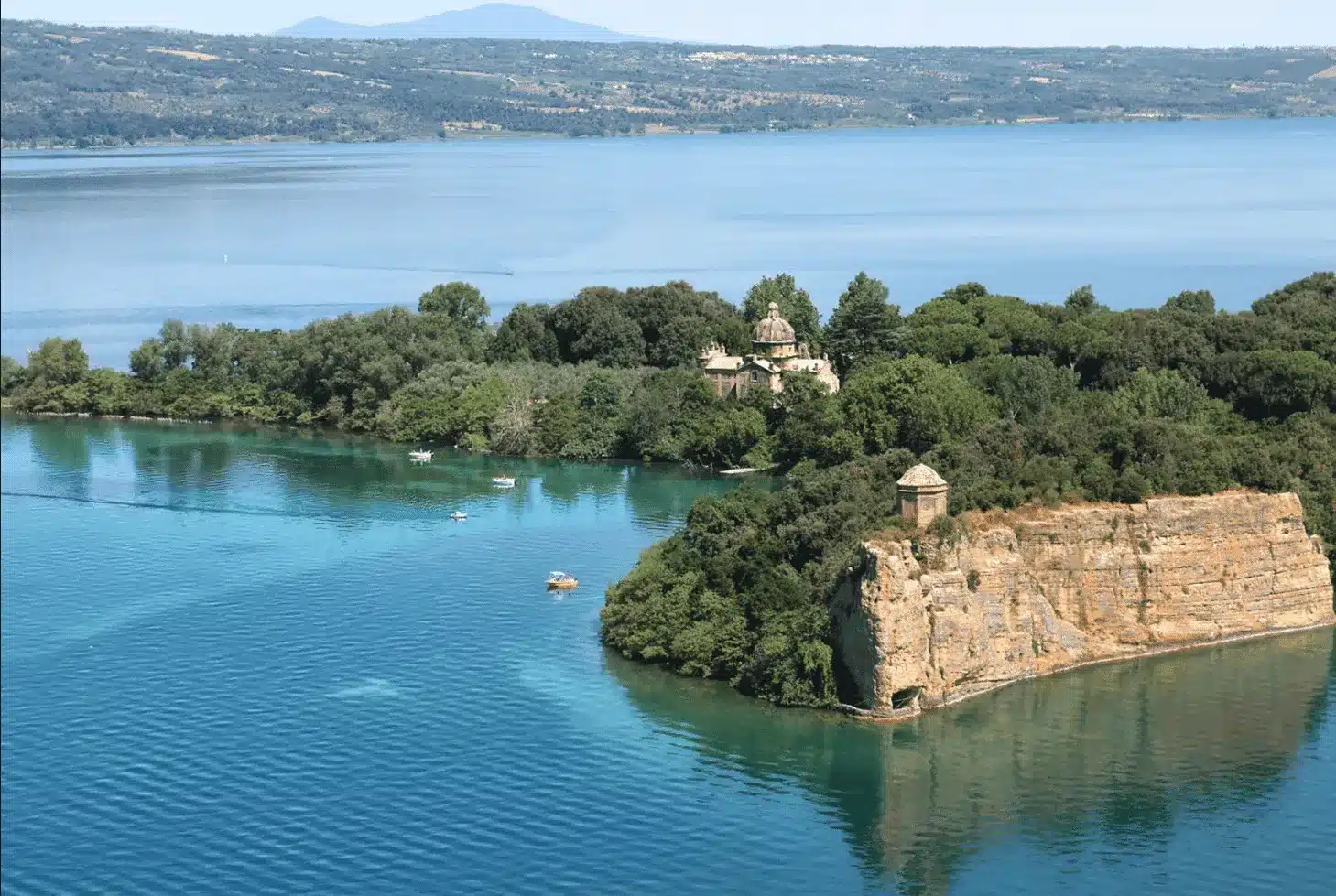About Lake Bolsena:
- It is a volcanic lake located in the northern part of the province of Viterbo in the Lazio region of Italy.
- It is the largest volcanic lake in Europe, covering a total area of 113.5 sq. km.
- It is 13.5 km (8.4 miles) in length and 12 km (7.5 miles) in diameter.
- Its formation began 370,000 years ago following the collapse of a caldera of the Vulsini volcano, which stayed active until 104 BC.
- It is known for a strange phenomenon, known locally as “sessa”, which causes tidal-like movements in the lake.
- The two islands, Martana and Bisentina, in the southern part of the lake were formed by underwater eruptions.
- The shores of the lake are characterised by almost untouched nature, with forests, reed beds, and quiet coves, as well as cultivated fields, olive groves, and vineyards.
- Towns Bordering: Capodimonte and Bolsena
What is a Volcanic Lake?
- A volcanic lake is a body of water that forms within a volcanic crater, caldera, or a volcanic depression.
- These lakes can develop after a volcanic eruption when the crater or caldera left behind fills with water, either from precipitation, groundwater, or melting ice and snow.
Q1: What is a Caldera?
A caldera is a large depression formed when a volcano erupts and collapses. During a volcanic eruption, magma present in the magma chamber underneath the volcano is expelled, often forcefully. When the magma chamber empties, the support that the magma had provided inside the chamber disappears. As a result, the sides and top of the volcano collapse inward. Calderas vary in size from one to 100 kilometers (0.62 to 62 miles) in diameter.
Source: Italy: Ancient 3000-year-old clay figurine discovered underwater with fresh finger prints
Last updated on June, 2025
→ UPSC Notification 2025 was released on 22nd January 2025.
→ UPSC Prelims Result 2025 is out now for the CSE held on 25 May 2025.
→ UPSC Prelims Question Paper 2025 and Unofficial Prelims Answer Key 2025 are available now.
→ UPSC Calendar 2026 is released on 15th May, 2025.
→ The UPSC Vacancy 2025 were released 1129, out of which 979 were for UPSC CSE and remaining 150 are for UPSC IFoS.
→ UPSC Mains 2025 will be conducted on 22nd August 2025.
→ UPSC Prelims 2026 will be conducted on 24th May, 2026 & UPSC Mains 2026 will be conducted on 21st August 2026.
→ The UPSC Selection Process is of 3 stages-Prelims, Mains and Interview.
→ UPSC Result 2024 is released with latest UPSC Marksheet 2024. Check Now!
→ UPSC Toppers List 2024 is released now. Shakti Dubey is UPSC AIR 1 2024 Topper.
→ Also check Best IAS Coaching in Delhi






















